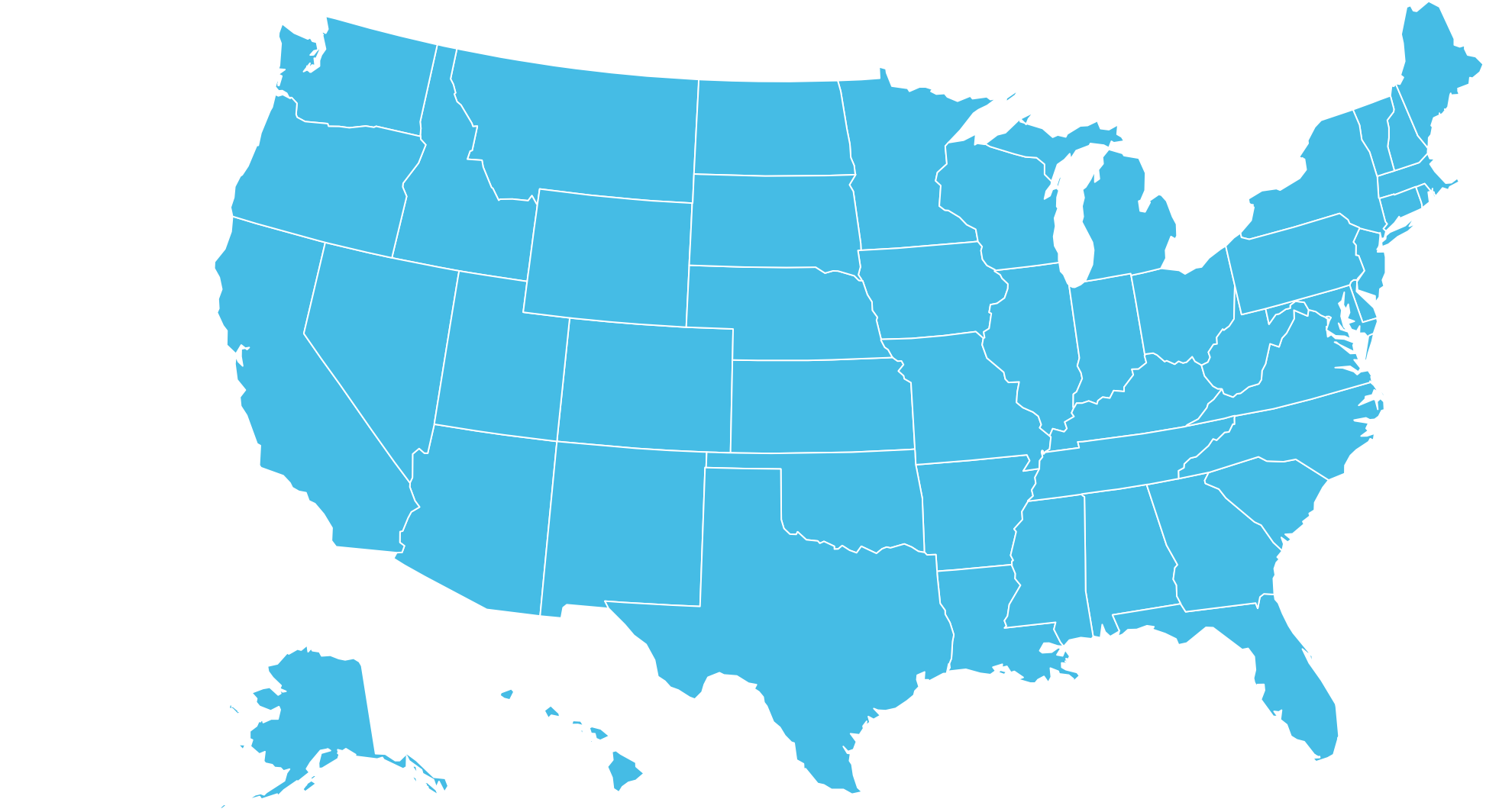Health Insurance in California: Navigating the Complexities of Affordable Care
Finding the right health insurance in California can feel overwhelming. With numerous plans, providers, and regulations to consider, many Californians struggle to secure affordable and comprehensive coverage. Are you one of them? This question affects millions, highlighting the critical need for clear, concise information about navigating the state’s healthcare landscape.
This comprehensive guide delves into the intricacies of health insurance in California, focusing on key aspects such as affordable plan options under the Affordable Care Act (ACA), the role of Covered California, and understanding eligibility requirements. We’ll analyze the various types of coverage available, explore potential costs and financial assistance programs, and offer practical tips for choosing the best plan to meet your individual needs and budget. Our goal is to empower you with the knowledge necessary to make informed decisions about your health and financial well-being, ensuring you find the optimal health insurance solution in California.
Browse the InsuranceAllCity directory.
- Calabasas
- Calexico
- Camarillo
- Campbell
- Canoga Park
- Canyon Country
- Carlsbad
- Carmichael
- Carpinteria
- Carson
- Castaic
- Castro Valley
- Ceres
- Cerritos
- Chico
- Chino
- Chino Hills
- Chula Vista
- Citrus Heights
- City Of Industry
- Claremont
- Clovis
- Colton
- Concord
- Corona
- Corte Madera
- Costa Mesa
- Cotati
- Covina
- Crockett
- Culver City
- Cupertino
- Cypress
- Sacramento
- Saint Helena
- Salinas
- San Bernardino
- San Bruno
- San Carlos
- San Clemente
- San Diego
- San Dimas
- San Fernando
- San Francisco
- San Gabriel
- San Jose
- San Juan Capistrano
- San Leandro
- San Luis Obispo
- San Marcos
- San Marino
- San Mateo
- San Pedro
- San Rafael
- San Ramon
- San Ysidro
- Sanger
- Santa Ana
- Santa Barbara
- Santa Clara
- Santa Clarita
- Santa Cruz
- Santa Fe Springs
- Santa Maria
- Santa Monica
- Santa Paula
- Santa Rosa
- Santee
- Saratoga
- Sausalito
- Seal Beach
- Sebastopol
- Selma
- Shafter
- Sherman Oaks
- Signal Hill
- Simi Valley
- Solvang
- Sonoma
- South El Monte
- South San Francisco
- Spring Valley
- Stanton
- Stockton
- Studio City
- Suisun City
- Sun Valley
- Sunnyvale
- Susanville
- Sylmar
Understanding California’s Health Insurance Landscape
California’s health insurance market is complex, but understanding its intricacies is crucial for residents seeking coverage. This section provides a comprehensive overview of the key aspects of health insurance in California, encompassing various plan types, crucial terminology, and navigation of the state’s health insurance exchange. Navigating this landscape effectively can significantly impact your access to affordable and quality healthcare.
The California health insurance system is heavily influenced by the Affordable Care Act (ACA), offering a blend of federal and state-level regulations. This blend creates a unique environment with specific opportunities and challenges for consumers. Understanding these nuances is essential to secure the most suitable and cost-effective plan. This section will also touch upon Covered California, the state’s health insurance marketplace, which plays a central role in connecting residents with available plans.
Key aspects of the California health insurance landscape include: the diverse range of available plans (HMO, PPO, EPO, POS), understanding essential health benefits mandated by the ACA, and the various financial assistance programs available to those who qualify. We’ll delve into the specifics of each, demystifying the jargon and empowering you to make informed decisions. We will also explore how California’s regulations enhance the ACA, leading to improved access to care for many residents. For instance, California’s enhanced subsidies have broadened access to coverage for lower-income individuals and families. Understanding these provisions is critical for maximizing benefits and minimizing expenses.
The California health insurance landscape significantly affects various demographics, including low-income individuals and families, seniors, undocumented immigrants, and students. Each group faces unique challenges and opportunities when it comes to securing health insurance. The state offers various programs and initiatives to address these needs, ranging from Medi-Cal (California’s Medicaid program) to specialized enrollment assistance programs. Understanding these programs is vital for ensuring every Californian has access to appropriate healthcare coverage. For example, Medi-Cal provides essential healthcare services to millions of low-income Californians, including children, pregnant women, and seniors.
In essence, understanding California’s health insurance ecosystem requires a multifaceted approach. This section provides a foundational understanding to equip you for making informed choices, navigating the complexities of the system, and ultimately, securing the healthcare coverage best suited to your individual needs and circumstances. The following sections will provide further details on specific plan types, enrollment processes, and resources to support your journey.
Choosing the Right Health Insurance Plan for Your Needs
Finding the right health insurance in California can feel overwhelming, but understanding your options is crucial for accessing affordable and quality healthcare. This section will guide you through the process of selecting a plan that best fits your individual needs and budget. We’ll explore key factors to consider, ensuring you’re well-equipped to make an informed decision within California’s diverse health insurance market.
Choosing the right plan involves a careful assessment of your healthcare needs and financial resources. First, consider your current health status. Do you have any preexisting conditions that require specialized care? This will significantly influence your plan selection, as some plans offer better coverage for specific conditions than others. Second, evaluate your healthcare utilization patterns. How frequently do you typically visit doctors or specialists? Do you anticipate needing extensive medical services in the coming year? Understanding your expected healthcare usage will help you determine whether a high deductible plan with lower premiums or a lower deductible plan with higher premiums is more suitable for your circumstances.
Next, thoroughly examine your financial situation. What is your budget for monthly premiums? How much can you comfortably afford to pay towards your deductible and out-of-pocket expenses? Your financial capacity will directly impact your choice of plan, as premiums, deductibles, co-pays, and coinsurance vary considerably across different plans. For example, a Bronze plan on Covered California generally has lower premiums but a higher out-of-pocket maximum, while a Platinum plan offers lower out-of-pocket costs but higher monthly premiums.
Comparing plans based on cost, coverage, and network of doctors is essential. Covered California’s online plan comparison tool provides a comprehensive platform to compare various plans side-by-side, allowing you to readily assess differences in premiums, deductibles, co-pays, and the availability of specific doctors and hospitals within your network. Remember to consider not only the cost but also the breadth of coverage offered by each plan. Covered California’s tool allows you to search for specific providers to verify their inclusion within the plan’s network. This ensures access to your preferred healthcare professionals.
Finally, remember to factor in your family size and any dependents covered under your plan. Family plans typically cost more than individual plans, but they offer coverage for your entire family. If you have children or other dependents, you’ll need to choose a plan that covers their needs as well. Furthermore, understanding your rights as a California health insurance consumer is crucial. The Affordable Care Act (ACA) protects individuals with preexisting conditions, ensuring access to comprehensive coverage regardless of their health history. Familiarizing yourself with your consumer rights safeguards you throughout the selection process and beyond. By meticulously evaluating your health needs, budget, and coverage options, you can confidently select a health insurance plan in California that best serves your requirements. Remember to utilize all available resources, including Covered California’s website and support services, to ensure a smooth and successful enrollment.
Obtaining Health Insurance in California: A Step-by-Step Guide
Obtaining health insurance in California can seem daunting, but with a clear understanding of the process, it becomes manageable. This step-by-step guide will walk you through the key stages of securing health coverage, ensuring you’re well-informed and prepared throughout the journey.
First, you need to determine your eligibility for various programs. Covered California, the state’s health insurance marketplace, offers subsidies and financial assistance to eligible individuals and families. Your eligibility is primarily determined by your income and household size. Understanding your income level is crucial in accessing potential financial aid. For instance, if your income falls below a certain threshold, you may qualify for Medi-Cal, California’s Medicaid program, which offers comprehensive coverage to low-income individuals and families.
Next, the application process itself is relatively straightforward. Begin by visiting the Covered California website. The application requires you to provide personal information, including your income, household size, and citizenship status. Accurate and complete information is vital for a smooth and timely processing of your application. Failing to provide accurate information can lead to delays or even denial of coverage. You will also need to provide supporting documentation such as tax returns, pay stubs, or proof of citizenship.
Once your application is submitted, Covered California will review it and determine your eligibility for subsidies or tax credits. These financial assistance programs significantly reduce the cost of insurance premiums, making health coverage more affordable. The amount of assistance you receive depends on your income and household size. For example, a family of four with a lower income may receive a larger subsidy than a single individual with a higher income.
Following the eligibility determination, you’ll be presented with a selection of plans that meet your needs and budget. Carefully compare the plans based on factors like monthly premiums, deductibles, co-pays, and network of providers. It’s highly recommended to use Covered California’s plan comparison tool to make an informed decision. Consider your healthcare needs – do you frequently visit specialists? Do you have pre-existing conditions? These factors will heavily influence your plan selection.
After selecting a plan, you’ll need to enroll before the open enrollment deadline. This deadline varies each year, so it’s crucial to stay informed and meet the deadline to avoid gaps in your coverage. Covered California provides regular updates on their website and through email notifications.
Finally, ensure you understand your rights as a consumer. Covered California and other resources provide extensive consumer protection to ensure fair and equitable access to healthcare. Be familiar with your options for appealing decisions or resolving disputes related to your coverage. Keeping updated on regulations and programs ensures you remain aware of your entitlements and resources available. Remember, choosing the correct health insurance plan is a personal decision based on your individual circumstances, financial situation, and health needs. This step-by-step approach helps simplify the process and helps secure the essential health coverage you need.
Affordable Care Act (ACA) and California’s Health Insurance Market
The Affordable Care Act (ACA), also known as Obamacare, has profoundly reshaped the health insurance in California landscape. Its impact is multifaceted, affecting premium costs, coverage options, and access to healthcare for millions of Californians. Understanding the ACA’s provisions and their interplay with California’s unique regulations is crucial for navigating the state’s complex health insurance market.
The ACA mandates several key provisions relevant to California residents. These include the expansion of Medicaid (renamed Medi-Cal in California), offering subsidized coverage to low-income individuals and families. Covered California, California’s state-based health insurance exchange, plays a central role in implementing the ACA, providing a platform for individuals and families to compare and purchase ACA-compliant plans. This exchange offers a wider selection of plans than many other states’ exchanges. The ACA also prohibits insurers from denying coverage based on preexisting conditions, a crucial protection for many Californians.
One significant impact of the ACA on California’s health insurance market has been the change in the number of uninsured residents. Before the ACA, a substantial portion of the population lacked health insurance. Post-ACA, while the number of uninsured remains a concern, the rate has significantly decreased due to the expansion of Medicaid and the availability of subsidized plans through Covered California. Data from the California HealthCare Foundation and the U.S. Census Bureau can illustrate this trend. For example, [Insert specific data showing the reduction in uninsured rates in California post-ACA].
Furthermore, the ACA mandates essential health benefits that must be included in all marketplace plans. These benefits cover a broad range of healthcare services, including doctor visits, hospitalization, prescription drugs, mental health services, and substance abuse treatment. California’s regulations often go beyond the minimum requirements of the ACA, further enhancing consumer protections and expanding coverage. For instance, California has implemented its own regulations regarding maternity care and mental health parity, ensuring more comprehensive coverage than the federal minimum.
In summary, the ACA’s influence on health insurance in California is significant and complex. The expansion of Medi-Cal, the creation of Covered California, and the mandated essential health benefits have all positively impacted access to affordable healthcare for many. However, challenges remain, including the ongoing debate about premium costs and the need for continued outreach and enrollment assistance to reach underserved populations. Understanding this interplay between federal and state regulations is key to effectively navigating the California health insurance system. The following sections will delve deeper into specific aspects of California’s health insurance market, examining various plan types, enrollment processes, and resources available to consumers.
Special Considerations for Specific Populations in California
Accessing Affordable Health Insurance in California requires navigating a complex system, but certain populations face unique challenges. Understanding these specific needs is crucial for ensuring equitable access to quality healthcare. This section will highlight the particular considerations for various groups within the California population.
Health Insurance Options for Low-Income Individuals and Families (Medicaid, Medi-Cal): In California, Medi-Cal, the state’s Medicaid program, provides comprehensive healthcare coverage for low-income individuals and families. Eligibility is determined by income level and other factors, such as age, disability, and pregnancy. Medi-Cal offers a wide range of benefits, including doctor visits, hospital care, prescription drugs, and mental health services. The application process involves providing documentation of income, residency, and identity. It’s crucial to understand the different Medi-Cal eligibility categories and apply through the correct channel. For instance, some adults may qualify based on their income alone, while others might qualify through a parent’s or spouse’s coverage or due to a disability. Detailed information on eligibility criteria and application procedures is readily available on the official Medi-Cal website. The application process and eligibility requirements can change. It is therefore advised to always refer to the most current information available from official sources.
Health Insurance for Seniors (Medicare) and Supplemental Options: For seniors aged 65 and older, or individuals with certain disabilities, Medicare is the primary source of health insurance coverage. However, Medicare does not cover all healthcare costs, and many seniors opt for supplemental insurance plans, known as Medigap plans, to help cover out-of-pocket expenses. These plans are offered by private insurance companies, and their costs and coverage vary significantly. Choosing the right Medigap plan depends on individual needs and budget. Additionally, Medicare Advantage plans (Part C) offer an alternative to traditional Medicare, combining Part A (hospital insurance), Part B (medical insurance), and often Part D (prescription drug coverage) into a single plan. Understanding the differences between Medicare options and supplemental plans is vital for making informed decisions. California’s senior population has unique needs in terms of accessing healthcare services and benefits, further emphasizing the importance of having access to supplemental options.
Health Insurance for Undocumented Immigrants: Access to affordable health insurance for undocumented immigrants in California presents a significant challenge. While they are generally ineligible for federally subsidized programs like the Affordable Care Act (ACA) marketplace and Medi-Cal, some safety-net programs and community clinics provide essential healthcare services. These programs often operate on a sliding scale based on income and offer a limited range of services. Charitable organizations and non-profit hospitals also play a crucial role in providing care to undocumented residents. It’s essential for undocumented immigrants to seek out these resources to ensure they receive the necessary healthcare services. The availability of these resources varies across different regions of the state. Advocacy groups are working to expand access to care for this vulnerable population.
Health Insurance for Students: Students in California often face challenges accessing affordable healthcare. Depending on their age, income, and family status, they might be eligible for Medi-Cal or Covered California. Many colleges and universities offer student health insurance plans, but these can be costly. Understanding the available options and comparing costs and coverage are crucial steps for students in securing adequate health insurance. Many student health plans may offer lower premiums but also have higher out-of-pocket maximums. Students should carefully review the plan’s terms and conditions to determine if it aligns with their needs and budget.
This overview highlights some key considerations for specific populations in California. It’s vital to remember that individual circumstances vary, and navigating the complex healthcare landscape requires thorough research and often, seeking assistance from professional guidance sources such as Covered California’s support staff or consumer advocacy groups.
Finding and Contacting Healthcare Providers in California
Finding the right healthcare provider in California can feel overwhelming, especially when navigating the complexities of health insurance in California. This section will guide you through the process of locating and contacting in-network doctors and specialists, ensuring access to the care you need under your chosen plan.
Using Covered California’s Provider Directory: The first and most crucial step is utilizing the Covered California provider directory. This online database, accessible through the Covered California website, allows you to search for healthcare providers within your plan’s network. You can filter your search by specialty (e.g., cardiologist, pediatrician, dermatologist), location, language spoken, and other relevant criteria. This ensures you find a doctor who meets your specific needs and is covered by your insurance. Remember to verify that the provider is still in-network before scheduling an appointment.
Locating In-Network Doctors and Specialists: Simply entering your zip code and the type of specialist you need into the Covered California search tool will return a list of providers within your network. It is essential to choose a doctor within your plan’s network to avoid incurring out-of-pocket expenses for covered services. Many plans require referrals to see specialists, a process explained in the next section. Consider factors like provider ratings, patient reviews (if available), and office location/hours when making your choice.
Understanding Referral Processes for Specialist Care: Many health insurance plans in California, particularly HMOs, require a referral from your primary care physician (PCP) to see a specialist. This means you must first schedule an appointment with your PCP, who will then determine if a referral is necessary and issue it if appropriate. The referral process varies depending on your insurance plan, so reviewing your plan documents or contacting your insurance provider for clarification is crucial. Failing to obtain a necessary referral may lead to higher out-of-pocket costs or denial of coverage.
Accessing Urgent and Emergency Care: In situations requiring urgent or emergency medical care, you should seek immediate attention at the nearest hospital or urgent care facility. Your health insurance plan will cover emergency services regardless of whether the provider is in-network. However, it’s always a good idea to inform the medical facility of your insurance details at check-in. While emergency services are covered, understanding your plan’s copay, deductible, and other cost-sharing responsibilities is important for managing expenses after the emergency. Knowing your health plan’s procedure for pre-authorization for non-emergency care is also highly recommended.
This section provides the fundamental steps for accessing healthcare providers within the California healthcare system. Remember, proactive communication with your insurer and careful review of your plan details will be vital in obtaining efficient and cost-effective access to care. This directly ties into understanding your rights as a California health insurance consumer, covered in a previous section.
Resources and Support for California Health Insurance Consumers
Finding the right health insurance in California can be complex, but numerous resources are available to guide consumers through the process. This section details the key support systems and organizations available to help Californians navigate their health insurance options and access the care they need. Understanding these resources is crucial for making informed decisions and securing appropriate coverage.
Navigating the complexities of California’s healthcare system can be challenging, particularly when selecting a health insurance plan. Fortunately, several organizations provide comprehensive support to consumers, helping them understand their options and access the coverage they need. These resources offer assistance with everything from application processes to dispute resolution, ensuring Californians receive the help they require.
Covered California, the state’s health insurance marketplace, offers extensive consumer support. Their website, www.coveredca.com, provides a wealth of information, including plan comparison tools, eligibility calculators, and detailed explanations of coverage options. Covered California also operates a call center staffed with trained representatives who can answer questions and provide personalized assistance. Their toll-free number is readily available on their website and in many online resources about California health insurance. This readily available support is essential for consumers who need help understanding their options and enrolling in a plan.
Beyond Covered California, several consumer advocacy groups offer valuable support. These organizations provide unbiased information, assistance with application processes, and advocacy for consumers facing insurance challenges. Examples include the California Health Advocates and various county-level health and human services agencies. These organizations often have multilingual staff and resources, catering to the diverse population of California. Their contact information can be found through online searches or by contacting Covered California for referrals.
Consumers requiring assistance with the application process or financial aid may seek help from certified application counselors. These counselors, often affiliated with community organizations or non-profits, provide one-on-one guidance, helping individuals understand eligibility requirements, complete applications accurately, and access available subsidies. The availability of these counselors varies by region, so it is recommended to check with Covered California or a local community resource center for information on available assistance.
For consumers facing challenges with their insurance company, an appeals process is available. Covered California provides detailed information about the appeals process on its website and offers assistance navigating this complex system. Independent consumer advocacy groups can also assist in navigating these appeals, offering support and guidance through the process. Understanding your rights and the available channels for dispute resolution is crucial in ensuring a fair and equitable healthcare experience. Properly understanding these avenues of appeal is key to receiving the proper healthcare you deserve.
In summary, Californians seeking health insurance have access to a comprehensive network of resources and support. From the official channels of Covered California to the valuable assistance provided by consumer advocacy groups and certified application counselors, abundant options exist to facilitate a smooth and informed decision-making process. Utilizing these resources can significantly simplify the process of obtaining and maintaining health insurance in California.
The Future of Health Insurance in California
California’s health insurance landscape is poised for significant change. The state, already a leader in healthcare reform, is grappling with evolving demographics, technological advancements, and ongoing political debates shaping the future of healthcare access and affordability. Understanding these factors is crucial for both residents and policymakers alike.
Potential Changes and Reforms in California’s Healthcare System: Several key areas are likely to see substantial alterations. Firstly, expansion of Medi-Cal, California’s Medicaid program, is anticipated, potentially extending coverage to a larger segment of the low-income population. This expansion could be fueled by ongoing efforts to address health disparities and improve access to care in underserved communities. Secondly, efforts to control healthcare costs will likely intensify. This could involve negotiating lower drug prices, regulating hospital pricing, and exploring alternative payment models that incentivize value-based care. Finally, policy discussions around universal healthcare in California are likely to continue, with potential reforms impacting the existing system’s structure and funding mechanisms. The success of these reforms will depend heavily on the political climate and the ability to secure adequate funding.
Emerging Trends and Technologies Impacting Health Insurance: Technological advancements are rapidly reshaping the healthcare industry, including health insurance. The increasing adoption of telemedicine will continue to expand access to care, potentially impacting the demand for traditional in-person visits. The rise of data analytics and artificial intelligence (AI) promises to improve risk assessment, fraud detection, and personalized care recommendations. However, concerns about data privacy and algorithmic bias need to be carefully addressed. Furthermore, the integration of wearable health technology and remote patient monitoring devices is expected to influence health insurance plans, potentially leading to customized premiums based on individual health data. This trend necessitates robust data security protocols and transparent data usage policies.
Predicting Future Costs and Coverage Changes: Projecting future costs and coverage changes in California’s health insurance market remains a complex undertaking. Several factors will play significant roles. These include the continued growth of the state’s population, particularly among the aging population needing increased healthcare services. Also crucial is the impact of inflation on healthcare costs, and the availability and affordability of prescription drugs. Finally, government policy decisions regarding subsidies and regulatory changes will strongly influence the affordability and accessibility of health insurance for Californians. Analyzing these factors through comprehensive economic modeling will provide a clearer picture of the likely cost trajectory and coverage variations in the coming years. The availability of reliable data and ongoing research will be essential for accurate forecasting.
In conclusion, the future of health insurance in California is dynamic and multifaceted. Understanding the interplay of potential policy reforms, technological advancements, and economic factors is crucial for navigating the evolving landscape and ensuring accessible, affordable healthcare for all residents. The coming years will witness significant changes, demanding proactive adaptation from individuals, insurance providers, and policymakers alike.
Frequently Asked Questions about California Health Insurance
Choosing the right health insurance plan in California can be overwhelming, but understanding the basics can simplify the process. This section addresses common questions regarding California’s health insurance landscape, helping you navigate the complexities of Covered California and other options. We’ll explore key aspects such as eligibility, enrollment, plan types, and financial assistance.
What is Covered California? Covered California is the official health insurance marketplace for California, established under the Affordable Care Act (ACA). It’s a platform where individuals and families can compare and purchase qualified health plans from various insurance providers. Covered California offers subsidies and tax credits to help make health insurance more affordable for eligible residents. This is a crucial entity for understanding California health insurance.
What types of health insurance plans are available in California? California offers several plan types, each with its own structure and cost. These include: Health Maintenance Organizations (HMOs), Preferred Provider Organizations (PPOs), Exclusive Provider Organizations (EPOs), and Point of Service (POS) plans. The best plan for you will depend on your healthcare needs, budget, and preferred network of doctors. Understanding these plan types is critical for making an informed decision.
How do I determine my eligibility for Covered California? Eligibility depends on several factors including your income, household size, and citizenship status. Covered California provides a simple online application to assess your eligibility and determine whether you qualify for financial assistance. Eligibility verification is a key step in the process. For example, a family of four with an annual income below a certain threshold may qualify for significant subsidies.
What financial assistance programs are available? Covered California offers financial assistance in the form of tax credits and subsidies to reduce the cost of health insurance premiums. The amount of assistance you receive is based on your income and family size. Additionally, other programs like Medi-Cal (California’s Medicaid program) provide healthcare coverage to low-income individuals and families. Accessing these financial aids is crucial for many Californians.
What is the enrollment period for Covered California? There is an annual open enrollment period, typically lasting several months in the fall, during which you can sign up for or change your health insurance plan. Special enrollment periods may be available for certain qualifying life events such as marriage, birth, or job loss. Missing the open enrollment period may lead to a gap in coverage. Knowing these deadlines is essential for continuous coverage.
What if I have pre-existing conditions? The Affordable Care Act prohibits health insurance companies from denying coverage or charging higher premiums based on pre-existing conditions. In California, this protection is further strengthened by state regulations. This is a significant protection for many individuals.
Where can I find more information and assistance? Covered California’s website provides comprehensive information on health insurance plans, eligibility, and financial assistance. You can also contact Covered California directly for assistance with the application process or to answer any questions you may have. Additionally, various consumer advocacy groups offer support and guidance to Californians seeking health insurance. Accessing these resources is crucial for a smooth experience.
This FAQ section provides a foundation for understanding California health insurance. Remember to explore the resources mentioned above to gather the most accurate and updated information based on your individual circumstances. Moving forward, we will delve deeper into choosing the right plan and the step-by-step enrollment process.












